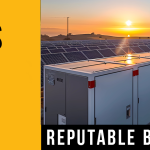
As wildfires, heat waves and hurricanes sweep across North America, residents are bracing for the power outages that come with these extreme weather events.
Strong winds can knock down electrical lines or blow dry vegetation like dead tree branches into power lines and ignite wildfires. Utilities may intentionally shut down targeted sections of power lines in fire-risk areas in the interest of public safety. In October 2019, for example, with wildfires burning through California, PG&E, the largest utility in the United States, cut the electricity to two million homes.
But turning off the power can also have negative effects on communities. People rely on a stable electricity supply for evacuation warnings, health care and essential services such as water and lighting.
Local electricity generation could mitigate these disruptions. During the California blackouts in 2019, Blue Lake Rancheria, an Indigenous community in northwestern California, was a “beacon of energy” in a sea of darkness. The community had previously constructed a state-of-the-art microgrid that allowed it to disconnect from the main grid and provide homes and businesses with solar-generated electricity while other Californians were left without power.
This year, the COVID-19 pandemic has further complicated the unplanned power outages caused by wildfires, hurricanes and other disasters. People are increasingly dependent on their home electrical supply to communicate, work and learn — and reduce their social isolation. In addition, travel restrictions, isolation requirements and supply chain problems for equipment and materials are making it difficult for utilities to respond quickly to power outages.
The trouble with the status quo
In the power systems that dominate North America and Europe, electricity is typically generated in large quantities far away from population centres and transmitted by power lines over long distances. More than 430,000 kilometres of transmission lines crisscross North America.





